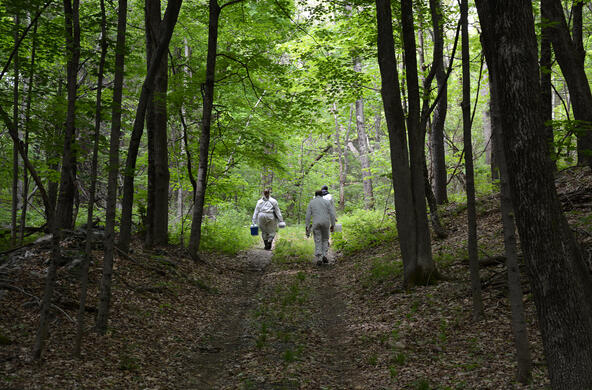
5 actions to reduce the accidental importation of insects and diseases from international trade.
Switch to pest-free packaging materials for international shipments to the US.
Minimize new pest outbreaks by expanding early and rapid response programs.
Augment international pest prevention programs with key trade partners.
Restrict the importation of live plants in the same genera as native woody plants in the US.
Tighten enforcement of penalties for non-compliant shipments.
Invasive pests imperil American forests
Our trees provide billions of dollars of economic value in addition to providing important habitat for many of the animals and plants that are part of the American landscape.
Trees filter air pollution, reduce flooding, cool neighborhoods, can help reduce crime, and store carbon dioxide, an important greenhouse gas that is contributing to global climate disruption. Unfortunately, unintentionally imported forest pests are threatening these same trees, and the risk of new invasions is intensifying.
Economic damage - who pays?
When pests damage or kill trees, homeowners and local municipalities shoulder the largest share of the costs. Homeowners lose property value when mature trees become infested and die or when trees must be removed to prevent further spread of the pest.
Local governments are saddled with the costs of treating live trees to prevent infestation, removing dead trees, and re-planting. When species disappear from our forests, important ecosystem services such as filtering our water and air can be compromised.
The total cost for a single invasive pest, the emerald ash borer, is expected to reach $12.7 billion by 2020.

By working together, we can help stem the tide of pest invasions
A team of scientists studied the problem of invasive forest pests and determined that existing trade regulations and protocols do not adequately protect US forests.
The five high priority actions outlined above and in the Tree-SMART Trade solutions paper can help stem the tide of invasive forest pests and provide very large economic, ecological, and community benefits.
Recent successes

More stringent enforcement of wood packaging regulations.

Comprehensive report on the issue and possible solutions.

Measures that importers can use to minimize pests in wood packaging.






